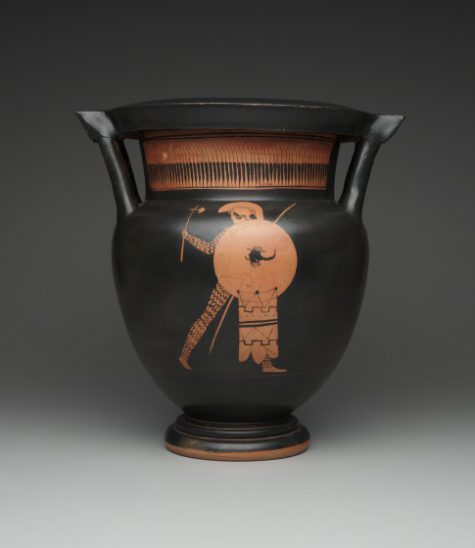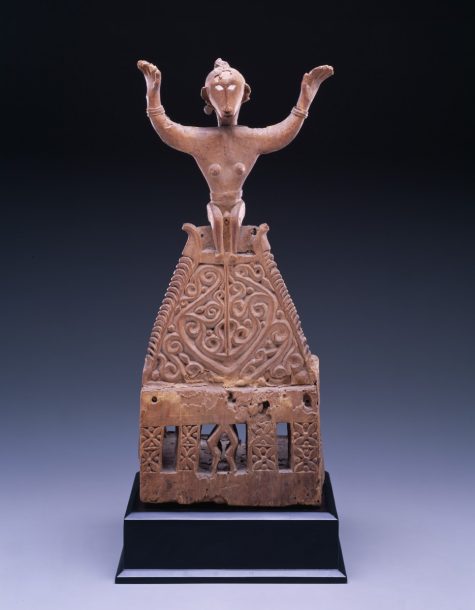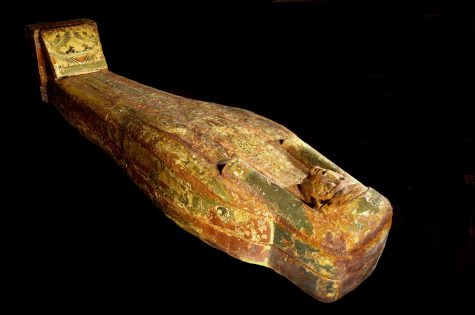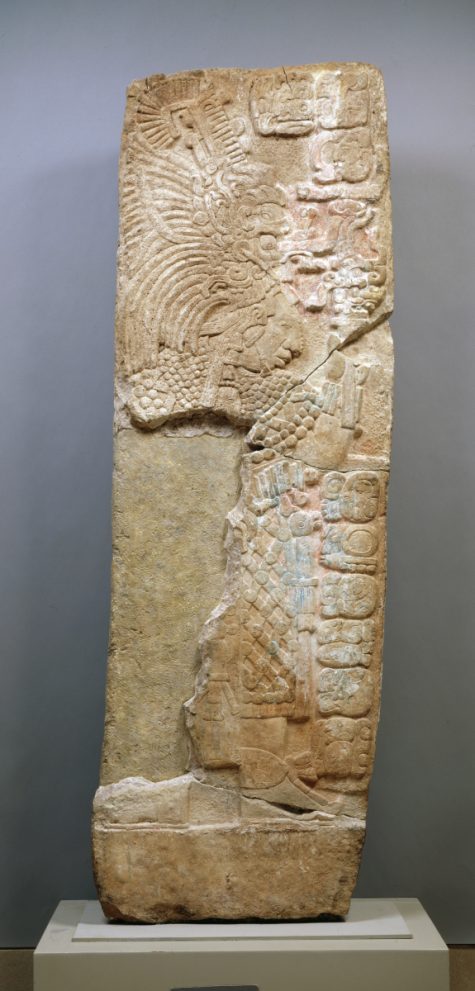In celebration of Women’s History Month, let’s look way back at a few leading ladies from the DMA’s collections who made their mark on the ancient world. Then join DMA curators Dr. Anne Bromberg, Dr. Kimberly L. Jones, and Dr. Roslyn A. Walker on Thursday, March 23 to hear more about Women of the Ancient World and the objects that tell their stories.

Red-figure column krater with Amazon, c. 470-460 B.C.E., ceramic with slip, Dallas Museum of Art, the Cecil and Ida Green Acquisition Fund, 2008.10
The Amazons were fierce group of women warriors who, until recently, were thought to be purely mythological figures. To the ancient Greeks, Amazons were barbarian man-haters and a formidable opponent for any would-be hero. They were an object of disgust for their rejection of traditional feminine roles, but they were also a source of fascination, often portrayed in art as beautiful and brave.

Altar depicting the first female ancestor, Indonesia, 19th century, wood and shell, The Eugene and Margaret McDermott Art Fund, 1999.181.McD
While this work of art was made fairly recently, it honors the founding female ancestor of this Indonesian society who is seen as the ultimate source of fertility. She is rising out of a boat, a symbol for the womb. Her arms are outspread, symbolizing the ancestral trunk of a tree and subsequent generations of branches.

Mummy and cartonnage, Egyptian, 19th Dynasty or later, wood and polychrome, Lent by Bridwell Library, Perkins School of Theology, Southern Methodist University, 20.2002.1.a-c
On this lid of this cartonnage, or coffin, we see an elaborately dressed woman and symbols of the deities that would protect her mummy inside. Although her identity is unknown, the quality of the coffin suggests that she was a person of wealth and social status.

Wall panel depicting Ix K’an Bolon, Mexico: state of Tabasco, Pomona, Maya culture, Late classic period, c. A.D. 790, Limestone, stucco, and paint, Foundation for the Arts Collection, gift of Mr. and Mrs. James, H. Clark, 1968.39.FA
The royal woman depicted in this Mayan relief sculpture is Ix K’an Bolon or “Lady Precious Nine.” The text on the panel and the iconography of her ornate clothing tell us she is depicted as a goddess. It is possible that this relief would have been balanced by a second showing her husband in similar dress, shedding light on the power and prestige of ruling women in Maya society.
Jessie Frazier is Manager of Adult Programming